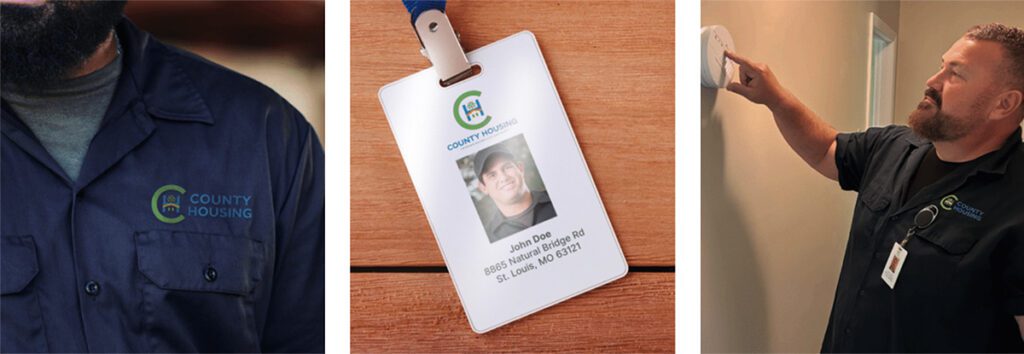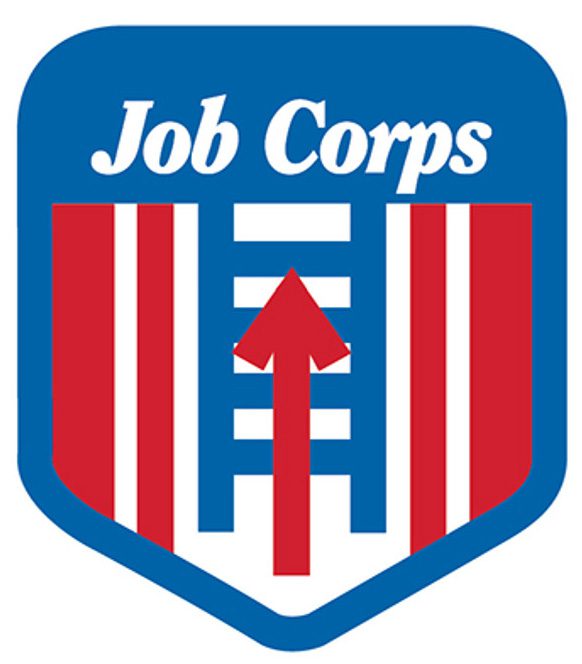June 2025 Public Housing Resident Newsletter
Table of Contents:
- CEO Message – Listening and Leading
- Feature Story – Staying Safe at Home: Updates for our Community
- Safe & Sound – Stay Cool, Stay Safe!
- Community Connect
- Maintenance Matters
Updates & Announcements – Making the Best of Housing: Understanding Occupancy Alignment
CEO Message
Listening and Leading
Dear Residents,
At County Housing, we believe that everyone deserves a safe, stable place to call home. That’s why this month, we’re focusing on safety—not just as a concept, but as a commitment we live out in every interaction, every update, and every investment we make in our communities.
From the arrival of our clearly marked fleet vehicles to the implementation of staff uniforms, we are taking visible steps to ensure you know who is working in your neighborhood and their role in supporting our communities. We’ve also made important updates to our policies, including our new Firearms & Weapons Policy, which is designed to promote safety for everyone in our communities.
These changes are just part of our ongoing effort to listen to your concerns and lead with transparency and care. We are building a culture of responsiveness, where your voice shapes the path forward.
Thank you for being part of the County Housing community. Your partnership helps make our neighborhoods stronger, safer, and more connected.
Warmly,
Shannon Koenig
Executive Director & CEO
County Housing
Feature Story
Staying Safe at Home: Updates for our Community
At County Housing, your safety is our top priority. This month, we’re highlighting several important updates designed to support a safe, respectful, and secure living environment for all.

Fleet Arrival: What to Expect
You may notice new County Housing vehicles in your neighborhood! These marked vehicles are part of our updated fleet, helping our staff respond to maintenance and inspection needs more efficiently and safely.
What to look for:
- Clearly marked County Housing logos
- Uniformed team members (see more below!)
- Courteous, professional staff ready to help
Spot Our Team in Uniforms
All County Housing maintenance and inspection staff will now be wearing official uniforms. This ensures you know exactly who is entering your property and adds another layer of safety and trust.

Our uniforms include:
- County Housing branded shirts
- Visible ID badges
- Professional and approachable appearance
If someone visits your residence claiming to be with County Housing and is not in uniform or doesn’t have ID, do not let them in and call us right away.
Admissions and Continued Occupancy Policies (ACOP) Update
Last year, the County Housing Board of Commissioners approved updates to the Admissions and Continued Occupancy Policies (ACOP). Residents can view the updated document anytime at this link.
Firearms & Weapons Policy
As part of our continued effort to keep our communities safe, we have updated the ACOP to include a new Firearms & Weapons Policy.
This policy clearly outlines prohibited items and expectations to ensure every household feels secure. Details are available here.
Coming Soon: Maintenance IQ – Smarter, Safer Service for Our Communities
At County Housing, the safety of our residents and staff is always a top priority. That’s why we’re excited to announce the upcoming launch of Maintenance IQ, a new digital tool that will modernize how we manage and track home inspections and maintenance work orders. This platform is designed to make the process more efficient, more transparent, and most importantly, safer.
Launching soon across our communities, Maintenance IQ will help streamline communication and enhance coordination. It will complement other safety measures we’re putting in place, such as clearly marked fleet vehicles, staff uniforms for easy identification, and updated policies that promote secure, well-maintained living environments.
Once implemented, Maintenance IQ will provide:
Quicker response times – Work orders will be logged and routed faster, meaning issues can be addressed more promptly
Better scheduling – Maintenance teams will be able to better prioritize and plan service calls, reducing delays and minimizing disruptions
Real-time text message updates – Residents will receive notifications regarding inspections and maintenance requests
Greater transparency – You’ll always know what’s happening and when, building confidence in the inspection and maintenance process
Maintenance IQ is part of our ongoing commitment to using smart, resident-centered solutions to improve service delivery, communication, and safety throughout County Housing com
Firearms & Weapons Policy
Important Update: New Firearms and Weapons Policy
At County Housing, we are deeply committed to the safety and well-being of our residents, guests, and employees. To reinforce this commitment, we are introducing a new Firearms and Weapons Policy, which was adopted by the Board of Commissioners in late 2024 and will take effect July 1, 2025.
This policy has been thoughtfully crafted to enhance the safety and security of our communities. We understand the importance of balancing safety with respect for individual rights, and this policy aims to provide clear guidelines on the possession and handling of firearms and weapons within County Housing properties.
What You Need to Know About the Policy
Purpose: The Firearms and Weapons Policy aims to protect residents, visitors, and staff by encouraging responsible ownership, safe storage, and proper handling of firearms and weapons.
Your Rights: Residents maintain their right to bear arms as law permits.
Your Responsibilities: All residents must comply with local, state, and federal laws regarding firearms and weapons, as outlined in your lease agreement. This includes ensuring the proper storage of firearms to prevent accidental harm and to ensure that unauthorized individuals cannot access them. Compliance with these laws and the terms of your lease is essential for maintaining the safety and security of our community.
Consequences of Violations: Unlawful possession, improper storage, or actions that endanger others may result in enforcement actions, including lease termination or eviction.
Learn More
The full Firearms and Weapons Policy, along with the FAQ and additional information can be found here.
Safe & Sound
Stay Cool, Stay Safe!
As summer temperatures rise, it’s important to take precautions to stay safe and healthy:
Stay Hydrated: Drink plenty of water, especially if you’re spending time outside.
Use Fans or AC: Keep your home cool with fans or air conditioning. If your AC isn’t working properly, contact your landlord right away.
Check on Neighbors: If you have elderly or medically vulnerable neighbors, check in on them during hot days.
Know the Signs of Heat-Related Illness Watch for symptoms like dizziness, headache, or nausea, and move to a cooler space right away. When in doubt, call 911.
🚨 Emergency Maintenance Reminder:
If you experience an emergency maintenance issue (such as a gas leak, no heat or A/C, flooding, or electrical hazard), call our 24/7 maintenance line right away at:
📞 (314) 492-3811
Community Connect

Your 24/7 Link to Local Help — Call 2-1-1
When you need help, it’s not always easy to know where to turn. That’s why United Way 211 is here, connecting you to agencies and resources in your area 24 hours a day, 7 days a week.
Whether you’re looking for support with housing, food, healthcare, or job training, 211 is a free and confidential service that can guide you to the right resources to help you and your family live your best possible lives.
Here are just a few ways 211 can help:
Basic Needs: Find local food pantries, shelters, and help with rent, utilities, or mortgage payments.
Health Resources: Get connected to Medicaid, Medicare, prenatal care, mental health services, crisis intervention, and substance use counseling.
Support for Seniors & People with Disabilities: Learn about home-delivered meals, home health care, transportation, and day programs.
Help for Children & Families: Access after-school programs, childcare referrals, family counseling, and early childhood learning resources.
Job Support: Explore GED prep, ESL classes, job training, and financial or transportation assistance.
Disaster Assistance: During severe weather or emergencies, 211 can provide info on shelters, disaster recovery resources, and more.
Just dial 2-1-1 or visit www.211helps.org to get started. You’re never alone; help is always just a call or click away.

Need Help Staying Cool This Summer? – Cool-Down St. Louis is here to help.
As temperatures rise, it’s important to stay safe and cool—especially during extreme heat. If you or someone you know is struggling with high utility bills or doesn’t have access to air conditioning, Cool-Down St. Louis may be able to help.
This local nonprofit provides assistance with utility bills and helps connect eligible households with air conditioners or other cooling resources during the summer months.
How they can help:
- Utility assistance to help prevent shutoffs
- Air conditioners for qualifying seniors and individuals with disabilities
- Tips and information to stay safe in extreme heat
Visit HeatUpStLouis.org to apply for assistance or call 314-241-0001 if you’re a senior in need of help. Let’s look out for one another this summer. If you know a neighbor who may benefit from this resource, please help spread the word!
Maintenance Matters
Staying Safe at Home this Summer
1. Fire Safety Starts at Home
- Test your smoke detectors monthly; press the button to be sure it’s working.
- Keep flammable items away from stovetops and unplug small appliances when not in use.
2. Electrical Check-Up
- Don’t overload outlets or power strips; this can cause overheating.
- If you notice flickering lights or outlets that feel hot, report it to maintenance right away.
- Extension cords are for temporary use only; avoid using them long-term.
3. Pest Prevention = Safer Spaces
- Store food in sealed containers and clean up crumbs or spills promptly.
- Report any pest sightings early; don’t wait!
- Keep outdoor trash areas clean and lids tightly closed.
4. Keep Hallways and Exits Clear
- Avoid blocking doorways, hallways, or windows – especially important in case of emergency.
- Report any broken lights in shared areas for better visibility at night.
5. Summer Safety Tips
- Watch out for slippery surfaces near entryways during rainy days. Wipe shoes and let us know if mats need replacing.
- Keep grills at least 10 feet away from your unit and never grill on porches or balconies.
Updates & Announcements
Making the Best of Housing: Understanding Occupancy Alignment
Occupancy Alignment is a HUD Rule and a County Housing Policy
Did you know that County Housing follows occupancy standards, a policy based on U.S. Department of Housing and Urban Development (HUD) rules? It’s all about making the most of our housing resources to serve as many families as possible.
What Is Occupancy Alignment?
Over time, household sizes can change. Maybe the kids have grown up and moved out, or maybe your family has expanded. Occupancy alignment means making sure families are living in homes that are the right size for their current household makeup.
Why It Matters
This process helps:
- Reduce wait times for families still seeking housing
- Ensure fair and efficient use of available units
- Keep housing responsive to community needs
What Happens If a Unit No Longer Matches a Household’s Size?
If it’s determined that your household no longer fits the size of your current unit, County Housing will contact you to discuss the next steps.
We’re Always Here to Help
We know that moving is a big deal, and we’re committed to working with you. Our goal is to make sure everyone has a home that’s safe, suitable, and available when it’s needed most.
Together, we can make our housing resources go further, helping more families find a place to call home.
County Housing 2025 Holiday Office Closures
Please be aware that County Housing will be closed on the following holidays in 2025:
- Juneteenth – Thursday, June 19
- Independence Day – Friday, July 4
- Labor Day – Monday, September 1
- Veterans Day – Tuesday, November 11
- Thanksgiving Day – Thursday, November 27
- Day After Thanksgiving – Friday, November 28
Additionally, County Housing will be closed for the holiday season from Thursday, December 25, 2025, Thursday, January 1, 2026, and will reopen on Friday, January 2, 2026.
Please plan accordingly, and we hope you enjoy your holidays!








